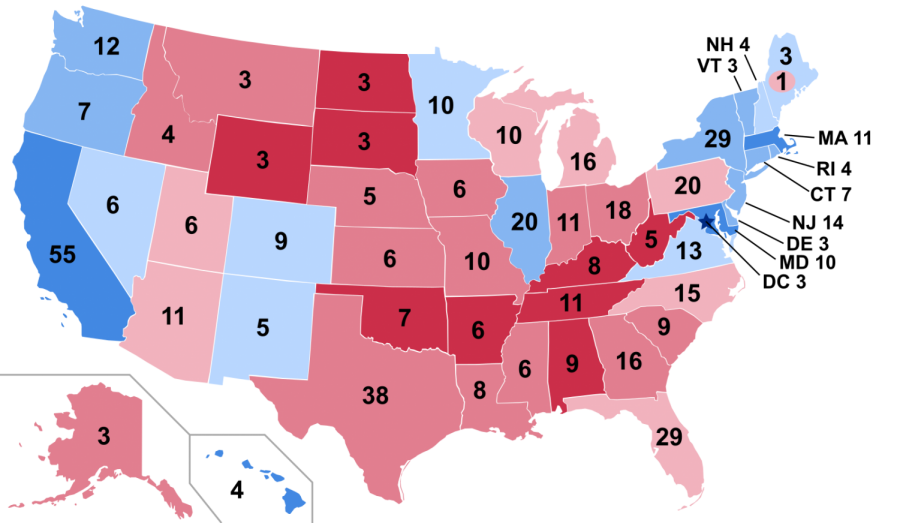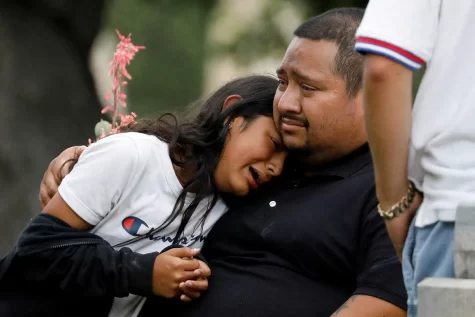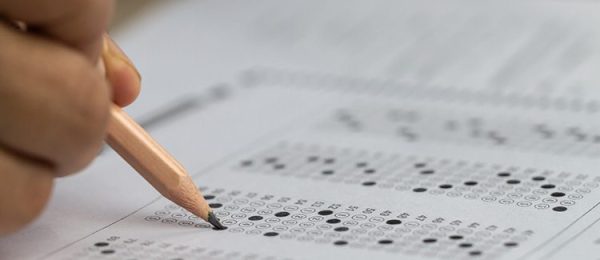The Electoral College: Why it Needs to Go, What We can Replace it With
It is not a stretch to say that the Electoral College system that we use to choose our president is imperfect, but what most people do not realize is that it is often an inaccurate reflection of the will of the people. The election outcome depends on only 7 or 8 swing states, meaning that roughly 75% of voters are marginalized.
In every state, Republicans and Democrats select a number of electors equal to their state’s congressional delegation (+3 for D.C). When voters cast their ballots on Election Day, they choose which party’s slate of electors they want to represent their state. The party that wins sends their electors to a meeting where all 538 electors vote for the next president. There are many flaws in this system.
The most obvious solution to fixing the Electoral College is a direct popular vote. An amendment would have to be made to the Constitution, scrapping the Electoral College, so that each vote is counted separately.
One benefit of this system is that it wouldn’t give disproportional weight to smaller states. In the Electoral College, smaller states have added influence because every congressional delegation contains two Senators, which distorts the election.
Another benefit of a direct popular vote is that it removes the possibility of a 269-269 electoral vote tie. This may seem like a long shot, but it happened once in 1800 between Thomas Jefferson and Aaron Burr, and it’s bound to happen again. When it does, the race will be decided in the House of Representatives using a “one vote per state” system. This means that states like Wyoming (578,759) and states like California (39,512,223) will get the same number of votes.
This proposal would also solve the issue of small third-party candidates playing spoiler and changing the outcome of the election. This happened in 2000 when Ralph Nader, the Green Party candidate, won 1.6% of the vote in Florida—enough to shift the state from Democrat to Republican—winning them the election.
An alternative version of a direct popular vote would be instituting something called the National Popular Vote (NPV). NPV was a movement that started in late 2006 to ensure that the candidate who wins the most popular vote nationwide is elected president. It bypasses the Electoral College without requiring a constitutional amendment. States can join the NPV compact, declaring that they will give all of their electoral votes to the candidate that wins the popular vote nationwide.
Constitutional amendments need support from 2/3’s of Congress and 3/4’s of states. Since support for the Electoral College is often divided along party lines, it is unlikely that Congress could find enough common ground on this issue to support an amendment.
Before the compact can take effect, enough states need to join to achieve a total of 270 electoral votes. Every state’s legislature has considered NPV but only 15 states (including NY) and the District of Columbia have passed NPV bills into law. The current total of electoral votes in the states with NPV laws is 196, meaning that only 74 more are needed. However, only states that usually vote Democrat are likely to join.
Another potential solution is to employ the District System in all 50 states. Currently, 48 states and D.C. use a Winner–Take–All System in which all the state’s electors go to the presidential candidate who wins the state’s popular vote. However, two states (Maine and Nebraska) use the District System in which one electoral vote is awarded to the candidate who wins the popular vote in each congressional district. The remaining two votes go to the candidate with the most votes statewide.
Using the District System would increase the incentive for candidates to campaign in non-swing states. These states do not get TV ads or campaign visits. It also decreases the incentive to pander to demographics prominent in swing states.
The District System would decrease the Electoral College’s influence on governance since first–term presidents who want to get reelected might reject or support policies based on their popularity in swing states.
The final Solution I will propose for fixing the election process is to reform the Electoral College.
There is no federal law or a constitutional provision requiring electors to vote for the party that nominated them. Occasionally, some faithless electors don’t. Seven electors were faithless in the 2016 election! Currently, only 33 states and D.C. have laws requiring electors to vote as pledged. Passing these laws in every state would prevent faithless ballots from being cast. The need for this change became even more apparent since President Trump encouraged 2020 electors to abandon their pledges and vote for him.
It is vital that we change the Electoral College because it does not truly reflect the will of the people. Candidates that lost the popular vote have been elected four times, two of which were very recent (Bush in 2000 and Trump in 2020). Another reason to change the Electoral College is that a recent poll suggested that 61% of Americans supported abolishing it.
In fact, the reasons the Electoral College was instituted are either undemocratic or no longer applicable. The system was first established as a compromise between electing the president by a vote in Congress and by a popular vote since many delegates to the Constitutional Convention were elitist and feared majority rule. This reason is undemocratic because it hinders the say of the people in their government. Another reason for the original establishment is that it would be hard to administer recounts which is no longer a relevant problem.
Knowing this about its founding and about all of the problems that the Electoral College creates in our presidential election system, it is obvious that any one of these proposed solutions would be a more fair and accurate system.









